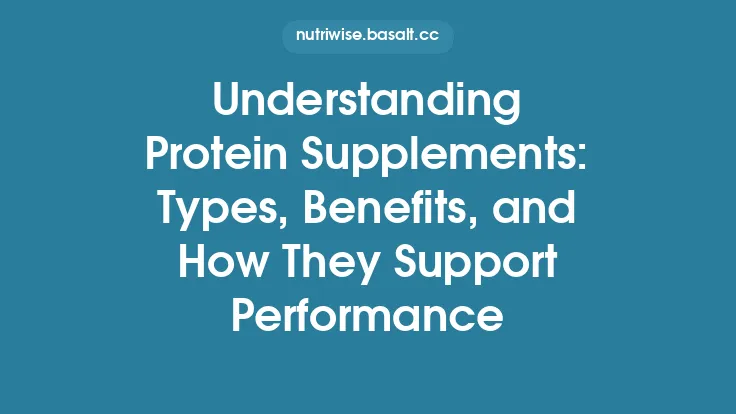Enzyme supplements have become a staple on many pharmacy shelves and health‑store aisles, promising smoother digestion, reduced bloating, and better nutrient absorption. While the idea of “adding more enzymes” sounds straightforward, the reality is nuanced. Understanding when supplementation is truly beneficial, how the products are designed to work within the gastrointestinal tract, and what the scientific evidence says can help consumers make informed choices and avoid unnecessary or even counterproductive use.
Why the Body May Need Extra Enzymes
The human digestive system produces a suite of enzymes that are released at specific points along the gastrointestinal (GI) tract. Under normal circumstances, these endogenous enzymes are sufficient to handle the typical diet of a healthy adult. However, several physiological and pathological conditions can impair enzyme production, secretion, or activity:
| Condition | Primary Mechanism of Impairment | Typical Clinical Manifestations |
|---|---|---|
| Exocrine pancreatic insufficiency (EPI) | Diminished secretion of pancreatic enzymes due to chronic pancreatitis, cystic fibrosis, or pancreatic resection | Steatorrhea, weight loss, fat‑soluble vitamin deficiencies |
| Lactase deficiency (primary or secondary) | Reduced brush‑border lactase activity, often age‑related or following intestinal injury | Lactose intolerance symptoms (bloating, diarrhea) after dairy consumption |
| Small‑intestine diseases (e.g., celiac disease, Crohn’s disease) | Mucosal damage leading to loss of enzyme‑producing enterocytes | Malabsorption, nutrient deficiencies |
| Post‑surgical states (e.g., gastric bypass, bariatric procedures) | Altered anatomy reduces mixing of food with digestive secretions | Early satiety, dumping syndrome, nutrient malabsorption |
| Age‑related decline | Gradual reduction in pancreatic output and gastric acid secretion | Mild dyspepsia, slower gastric emptying |
| Medication‑induced effects (e.g., proton‑pump inhibitors) | Decreased gastric acidity can impair activation of certain enzymes | Increased risk of bacterial overgrowth, subtle malabsorption |
In these scenarios, the shortfall in enzymatic activity can be a direct contributor to the patient’s symptoms, making enzyme supplementation a logical therapeutic adjunct.
How Enzyme Supplements Are Engineered to Function
Enzyme supplements are not simply powdered extracts tossed into a capsule; they are carefully formulated to survive the harsh environment of the stomach and release their active components where they are most needed.
1. Source of Enzymes
| Source | Typical Enzyme Profile | Advantages | Limitations |
|---|---|---|---|
| Porcine pancreas | Broad spectrum of proteases, amylases, lipases | Closest match to human pancreatic secretions | Concerns about animal‑derived products, potential for viral contamination |
| Bacterial or fungal fermentation (e.g., *Aspergillus niger, Bacillus subtilis*) | High yields of specific enzymes (e.g., lactase, cellulase) | Scalable, low allergenicity, stable across pH ranges | May lack the full complement of human pancreatic enzymes |
| Plant‑derived extracts (e.g., pineapple bromelain, papaya papain) | Proteolytic activity | Natural source, anti‑inflammatory properties | Limited activity on carbohydrates and fats; variable potency |
Manufacturers often blend multiple sources to achieve a balanced enzyme profile that mirrors the physiological mix required for comprehensive digestion.
2. Enteric Coating and Targeted Release
The stomach’s acidic pH (≈1–3) can denature many enzymes, rendering them inactive before they reach the small intestine. To circumvent this, most high‑potency supplements employ an enteric coating—typically a polymer that remains intact at low pH but dissolves at the higher pH of the duodenum (≈6–7). This strategy ensures that the enzymes are released in proximity to the brush‑border where nutrient absorption occurs.
3. Dosage Standardization
Enzyme activity is expressed in Units (U) rather than mass (mg), because activity depends on the catalytic efficiency of the enzyme preparation. For example:
- Lipase: 1,000–3,000 U per capsule
- Amylase: 500–1,500 U per capsule
- Protease: 200–500 U per capsule
- Lactase: 3,000–9,000 FCC (Food Chemical Codex) units per capsule
Manufacturers must provide these activity values on the label; otherwise, the product’s efficacy cannot be reliably assessed.
4. Adjunctive Ingredients
Some formulations include acidifiers (e.g., citric acid) to lower the pH locally and promote enzyme activation, or probiotics to support a balanced microbiome that can synergize with enzymatic digestion. While these additions can be beneficial, they also introduce variables that may affect tolerability and should be considered when selecting a product.
Evidence‑Based Indications for Use
Exocrine Pancreatic Insufficiency (EPI)
Randomized controlled trials (RCTs) in patients with chronic pancreatitis and cystic fibrosis consistently demonstrate that pancreatic enzyme replacement therapy (PERT) improves fat absorption (coefficient of fat absorption ↑ from ~50 % to >85 %) and reduces steatorrhea. Guidelines from gastroenterology societies recommend titrating the dose to achieve symptom control, typically starting at 25,000–40,000 lipase units per main meal and adjusting based on stool consistency and weight gain.
Lactose Intolerance
Lactase supplements taken immediately before dairy ingestion can reduce hydrogen breath test peaks by 30–70 %, translating into fewer gastrointestinal symptoms. The effect is dose‑dependent; a minimum of 3,000 FCC units per 250 mL of milk is often required for most adults.
Post‑Surgical or Anatomical Alterations
Patients who have undergone bariatric surgery frequently report early satiety and malabsorption. Small studies suggest that enzyme supplementation (especially proteases and lipases) can improve protein and fat uptake, though the data are less robust than for classic EPI. Clinicians typically start with a moderate dose and monitor weight trends and nutrient labs.
Age‑Related Digestive Changes
Observational data indicate that older adults (≥65 years) may benefit from low‑dose enzyme blends, particularly for protein digestion, which can support muscle maintenance. However, large‑scale RCTs are lacking, and the recommendation remains “consider on a case‑by‑case basis.”
Functional GI Disorders
In irritable bowel syndrome (IBS) with predominant bloating, enzyme supplements targeting specific problematic foods (e.g., lactase for dairy, α‑galactosidase for legumes) can provide symptomatic relief. The benefit is generally modest and should be integrated with dietary counseling.
Safety Profile and Potential Pitfalls
| Issue | Details |
|---|---|
| Allergic reactions | Rare, but possible with animal‑derived enzymes; patients with pork or beef allergies should avoid porcine preparations. |
| Over‑supplementation | Excessive lipase can lead to steatorrhea paradoxically, as unabsorbed fatty acids may irritate the colon. |
| Drug interactions | Enzyme preparations can affect the absorption of oral medications that rely on gastric pH or intestinal transporters (e.g., certain antiretrovirals, bisphosphonates). |
| Contamination risk | Poor manufacturing practices may introduce microbial contaminants; third‑party testing (e.g., USP, NSF) mitigates this risk. |
| Misuse in healthy individuals | For people with normal pancreatic function, routine supplementation offers no proven benefit and may mask underlying dietary issues. |
Overall, enzyme supplements are considered generally safe when used as directed, but clinicians should screen for contraindications and educate patients on proper timing (usually with the first bite of a meal).
Regulatory Landscape and Quality Assurance
In most jurisdictions, digestive enzyme supplements are classified as dietary supplements rather than drugs. This classification means they are not required to undergo the rigorous pre‑market approval process that pharmaceuticals do. However, manufacturers must adhere to Good Manufacturing Practices (GMP) and ensure that label claims are not false or misleading.
Key quality markers to look for:
- Third‑party verification (e.g., USP Verified, NSF Certified for Sport) – confirms that the product contains the stated enzyme activity.
- Batch‑specific potency testing – ensures consistency across production runs.
- Clear labeling of enzyme units – activity should be expressed in standard units (U or FCC) rather than just milligrams.
- Stability data – indicates the shelf life under typical storage conditions; enzymes can lose activity over time if not properly protected.
Consumers should be wary of “proprietary blends” that hide exact enzyme quantities, as this makes efficacy assessment impossible.
Practical Guidance for Clinicians and Consumers
- Identify the underlying need – Conduct a focused history and, when appropriate, objective testing (e.g., fecal elastase for pancreatic function, hydrogen breath test for lactose intolerance).
- Select the appropriate formulation – Match the enzyme source and activity profile to the clinical indication (e.g., high‑lipase porcine PERT for EPI, lactase tablets for dairy intolerance).
- Start low, titrate up – Begin with the lowest effective dose to minimize side effects and adjust based on symptom resolution and objective markers (weight gain, stool fat content, nutrient levels).
- Educate on timing – Instruct patients to take the supplement at the start of the meal, and to avoid crushing enteric‑coated capsules unless specifically advised.
- Monitor and reassess – Re‑evaluate efficacy after 4–6 weeks; consider dose escalation, switching formulations, or investigating alternative diagnoses if symptoms persist.
- Address lifestyle factors – Enzyme supplementation should complement, not replace, dietary modifications (e.g., reducing high‑fat meals in EPI, limiting lactose in lactase deficiency).
Emerging Trends and Future Directions
- Targeted enzyme delivery systems: Nanoparticle carriers and pH‑responsive polymers are being explored to improve enzyme stability and site‑specific release, potentially reducing required dosages.
- Genetically engineered enzymes: Recombinant production of human‑identical enzymes promises lower immunogenicity and higher specificity, especially for rare enzyme deficiencies.
- Personalized supplementation: Integration of gut microbiome profiling with enzyme needs could allow clinicians to tailor blends that address both host and microbial metabolic gaps.
- Combination therapies: Trials are investigating the synergistic effect of enzyme supplements with probiotics or prebiotic fibers to enhance overall digestive health.
Bottom Line
Enzyme supplements occupy a valuable niche for individuals whose digestive capacity is compromised by disease, surgery, age, or specific food intolerances. Their efficacy hinges on delivering the right enzymatic activity to the appropriate segment of the GI tract, which is achieved through careful source selection, enteric coating, and dosage standardization. When used judiciously—guided by clinical assessment, evidence‑based dosing, and quality‑assured products—these supplements can markedly improve nutrient absorption, alleviate uncomfortable symptoms, and enhance quality of life. For the healthy population, routine supplementation offers little advantage and may distract from more fundamental dietary and lifestyle interventions. As research advances, we can anticipate more precise, personalized, and technologically sophisticated enzyme products that further bridge the gap between digestive physiology and therapeutic nutrition.





